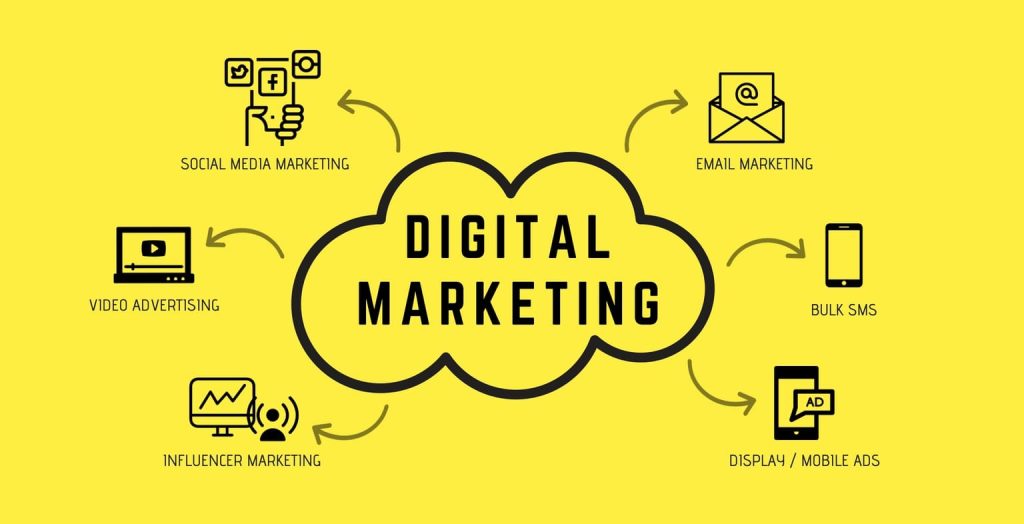Lead sustaining is an essential piece of B2B promoting in light of the fact that it’s a vital methodology in driving planned clients towards a buy choice. At the point when done well, it can ultimately transform possibilities into steadfast clients who will add to manageable income in the long run.
While they probably won’t be clients every step of the way, possibilities transform into warm leads quicker assuming you contribute the time and work to convey routinely after their most memorable contact.
Be that as it may, it is simply the starting to draw in likely purchasers. Recollect that for a lead to be viewed as fruitful, it should eventually transform into a deal. To arrive, you’ll be proactive about supporting each move toward the deals transformation process.
Lead sustaining is the method involved with sending important substance to your leads. As they go on through the interaction, they are driven down your business channel to where they’re prepared to pursue a buy choice. Through lead support, you’re given the chance to persuade a possibility of the worth of your contribution. While fulfilling, it presents its own arrangement of difficulties.
Here is a speedy video from Dashly about the essentials of lead sustaining
Quick Takeaway:
A good lead nurturing program has
- A clear goal
- A clear audience
- The right, personalized content
- A timeline based on your sales cycle
- Multiple touches
- A method for measurement and improvement
- Sales and Marketing alignment
While it is important to foster a supporting effort to keep your business top-of-mind for your possibilities, B2B organizations are as yet committing extremely clear sustaining errors. The most awful part is; these errors are normally quite simple to keep away from.
Innovation has permitted advertisers to scale their lead-supporting efforts with promptly accessible robotization devices and simple to-utilize CRM programming. These are viable instruments for conveying the ideal message brilliantly to qualified leads, making it more straightforward to drive leads through your deals pipe.
On the off chance that your promoting group isn’t getting some margin to think of a powerful B2B lead age and lead-sustaining procedure, you’re permitting a significant deal of an open door to get past you.
Strategies of Lead Nurturing
1. Focus on your email strategy
Marketing automation has made email nurturing easier than ever. By being able to have up-to-date charts of email demographics, you can distribute your attention grabbers where they make the most sense. It might seem antiquated, but email marketing and nurturing haven’t gone out of style just yet, especially when used in conjunction with your other platforms.
2. Utilizing your targeted content
The content you create for your website can be tailored to specific niches in your target audience. By writing and composing content with these mini-demographics in mind you can maximize the personalization in your lead nurturing efforts!
3. Diversify your distribution
Use your social media platforms! If you aren’t using your brand as a means to have a voice in whatever community you’re targeting, you’re behind the curve.
Social media gives you a chance to establish a brand voice and lend a level of authenticity to your business.
By knowing where the people are and interacting with them, you’re already ahead of the competition that isn’t in the know. With your voice on social media, you have access to multiple platforms to nurture leads.
Source: Marketing Charts
Challenges of Lead Nurturing
1. Determining Lead Nurturing Timeframes
What is the right timeframe for launching your lead nurturing efforts? Continuing long after a lead has turned cold can be detrimental but giving up too soon to raise interest may cut loose leads that simply needed a bit more time.
While there’s no cut-and-dried answer to determine a precise timeline, you can come up with the best answer by determining your average customer’s buying cycle. Find out how long it takes for your leads to become customers by monitoring their movement from the top of the sales funnel down to the time they convert into customers.
For example, if the buying cycle typically averages four months from lead to sale, then that’s the amount of time you should allot to your lead nurturing campaign. You need to adjust timing and messaging based on a prospect’s stage in the sales funnel.
2. Figuring Out How Often to Contact Leads
How frequently should you send an email or call your leads? As a general rule of thumb, most businesses tend to make more frequent, educational offers to leads at the top of the sales funnel.
At this stage, the barriers to consumption are quite low, so emails are generally well received especially if the content you send successfully resonates with your target audience. New prospects will appreciate any valuable, engaging content, which helps to increase awareness and trust in your brand. But don’t overdo it. Communication frequency should decrease as time goes on.
Once new prospects move to the middle of the sales funnel, the content you share will require more of their commitment, so it’s better to taper your offers to avoid overwhelming them. Instead, send more specific, highly relevant offers like blog posts, webinars, or any other content that will accelerate their movement along the sales funnel.
3. Determining What Type of Content or Offers are Appropriate
The type will vary depending on your audience, and one way to discover what works is to go back to your sales funnel and identify any gaps in your current content offers. For example, you might have too many top-of-the-funnel educational-type offers and not enough industry-specific webinars for marketing qualified leads. Adjust your content offers based on the results and update any stale content that fails to resonate with your target audience.
Going back to Demand Gen’s Benchmark Study, respondents said that the types of content that most leads respond favorably to are research-based, with 69% saying that whitepapers are effective offers that yield positive results. 61% also said that thought leadership articles and webinars also work well.
Let’s not forget about the most effective channels for sharing your content. Email remains the most popular (94% usage) and 43% use re-targeting and telemarketing as well.
4. Proper Tracking and Monitoring of Lead Nurturing Results
After all the effort that goes into capturing and nurturing prospects, it’s tempting to keep launching new lead-generation campaigns without combing through your old campaign’s overall results. While it’s not wrong to do so, it’s also a missed opportunity to learn from your mistakes or to learn first-hand what best practices to adopt for your next campaign.
You can use a simple Excel file for tracking or a full-fledged analytics software program for monitoring results in detail. Whatever tools you end up utilizing, use them to map out the buying journey, identify leads that dropped out, and monitor KPIs such as click-through, conversion, and engagement rates. These are some of the elements you should track to determine the success of a campaign and inform your decisions for future lead nurturing efforts.
Common Lead Nurturing Mistakes
1. Lack of Communication with Buyers
On average, it takes about ten touches—or points of contact—for leads to turn into sales, but that still depends on the type of your business and your sales cycle.
Aside from ensuring engagement with touchpoints, you can also structure contacts with the help of lead nurturing in stages. For example, start new connections off with general educational information to attract, then move onto more detailed information about your products or services as you nurture them towards a purchase decision.
2. Generic Rather than Targeted Lead Nurturing
Every person is unique and undergoes different struggles, and leads are no different. You want to address each one’s unique challenges to let them know that you understand their situation and want to help them.
Personalization goes a long way when nurturing your leads. Your content should address their specific concerns, needs, or recent actions. For example, if someone downloads content on your website, send them an email reflecting what they did and suggest guidelines for their next steps.
To help with personalized and targeted content, start by creating unique buyer personas or fictionalized representations of your key market segments based on similar demographic and psychographic characteristics. Based on that buyer persona, you can create nurturing lists so that you can tailor your emails and content based on product interest, job title, location, etc.
3. Creating “Good Enough” Content
Nowadays, passable content is not going to cut it. As the cornerstone of lead nurturing, content should address your leads’ questions. So naturally, businesses are increasing their content creation efforts.
A “good enough” piece of content isn’t going to earn your leads’ trust and will most likely be second-rate (or worse) when compared to easily accessible alternatives.
4. Not Using Behavioral Targeting
The word dynamic refers to “constant change, activity, or progress,” and in lead nurturing, dynamically sending targeted content helps marketers adapt to the ever-changing B2B landscape.
Triggered emails are the most common example of behavioral targeting and are usually done via a marketing automation system in response to a lead’s behavior on your website or social channels.
This method pulls together the triad of email marketing: sending the right content to the right person at the right time.
While it’s not complicated to write triggered emails, it is hard work to set up the triggers throughout your nurturing campaign. Consider first which set of actions should lead to a trigger email; for example, viewing specific articles.
5. Not Providing Supplemental Content
If a lead visits your site and downloads an eBook, chances are they’re relevant to your target market. That means they’ll be able to extract value from your other content as well (because we create content specifically for our target markets).
Don’t let the lead settle for a single content offer before forgetting about you. Include supplemental content based on what they’d consumed before. The more positive touchpoints you can bring to the table, the higher your chances of conversion.
6. Slow Response Time
When you respond to a new lead within 42 hours, you’re making a costly mistake because the odds of a lead turning into a purchase are 21 times higher if the lead is contacted within 5 minutes, compared to 30 minutes. Imagine how many leads you might be losing after 42 hours!
The same study also showed that only 16% of companies respond within 24 hours. Even worse is if the prospects are the ones reaching out.
Lead nurturing must be a proactive approach to achieve top-of-funnel prospects. The faster you reply to new leads, the greater your chances of them turning into sales.
7. Not Letting Sales Sell
Marketing automation platforms can provide dynamic, relevant content to leads for nurturing, but it’s still the sales team’s job to seal the deal.
Every seller must have the knowledge, skills, and behavior needed to do just that, but they also need to be aligned with your company’s lead nurturing process. Without this sync, leads will continue to receive emails from the automation system when a sales rep should already be talking to them.
Nurture leads with excellent content, convince them to talk with your sales rep, and then let the sales rep do his/her work. This also entails sending some great content along with the personal email, too. Automation is great, but it should always support one-to-one conversations, not relieve the need for them.
8. Not Optimizing Lead Scoring with Conversion Metrics
Lead scoring is a way to rank prospects against a scale that represents the perceived value of each opportunity. This is usually done by assigning numeric values to specific behaviors, conversion events, or social media interactions. The resulting score then determines which leads should be prioritized for follow-up by a sales rep and which leads need to be nurtured further.
Lead scoring is a hypothesis, which means each point for action is just an educated guess. Work with sales to adjust the scoring logic after you have developed a baseline and aim to continuously improve things to optimize your lead qualification process.
A basic equation that tracks conversions from Marketing Qualified Leads (MQLs) to Customers can help come up with a baseline to know if your lead scoring is working. This reads as (# of MQLs sent to sales) / (# of customers closed from MQLs).
If the percentage is too low, readjust the way you score leads. Despite a respectable conversion rate, remember to look for any areas in that you can improve.

Source: Marketing Charts
9. Not Doing Your Research
Yes, it takes considerable time and effort to identify your target audience, but it will be worth it in the long run. Identifying your ideal customer means that you’re not working blindly. It helps you avoid mistakes and wasting valuable resources by trying to communicate to an audience that you don’t know or understand.
Avoid this common misstep by doing your due diligence through research. There are many tools and software that you can use to observe customer behavior, many of which are free. So, there’s no excuse for not knowing your audience like the back of your hand. Find out what their pain points are and figure out what you can do to solve their problems. Armed with this knowledge, your product offer can prove itself to be the best solution for their most pressing issues.
10. Failing to Map Content to the Sales Funnel
If you’ve researched your target audience and created a buyer persona, you should have enough insight to come up with an effective lead magnet. Use it to create an irresistible offer or valuable piece of content that they can’t help but accept.
Start by identifying and solving a pain point that your buyer persona is having. Share relevant content that solves their problems on a regular basis and put them in highly visible places (which could be your website, landing pages, social media accounts, email network, or any other platforms your audience frequents). Don’t forget to conduct A/B tests on a regular basis and tweak your approaches accordingly.

Source: Visual Paradigm
11. Failing to Follow Up
Once you’ve segmented your leads and identified those who have expressed interest in your product, don’t leave them hanging. Initiate contact and reach out to them as soon as possible. Chances are, they might not be ready to buy right this instant, but circumstances might change in the future.
Follow up with them and remind them why they became interested in the first place. It’s a wasted sales opportunity not to do so, yet up to 50% of marketers fail to follow up with leads who expressed initial interest.
Responding fast is key; a Harvard Business Review study showed that following up with leads within an hour means that they are up to 7 times more likely to convert. Use notification alert software to remind you to follow up with and get in touch with specific leads.
Make Lead Nurturing Work for You
Many studies have proven the success of lead nurturing programs. Such programs are also useful when it comes to segmenting and identifying leads in the various stages of the sales funnel. Competition is fierce, and customers have individualized needs. Remember to stand out from the rest by optimizing your lead nurturing strategy to focus more on your best leads and less on your worst.
The ability to successfully convert leads into customers is largely determined by how well you know your prospects and what you do based on this knowledge. Monitoring and tracking progress can only be as effective as what you decide to do with the results. You need to be proactive and respond to what your KPIs are telling you by updating your approach, leveraging what works, and avoiding what doesn’t.




